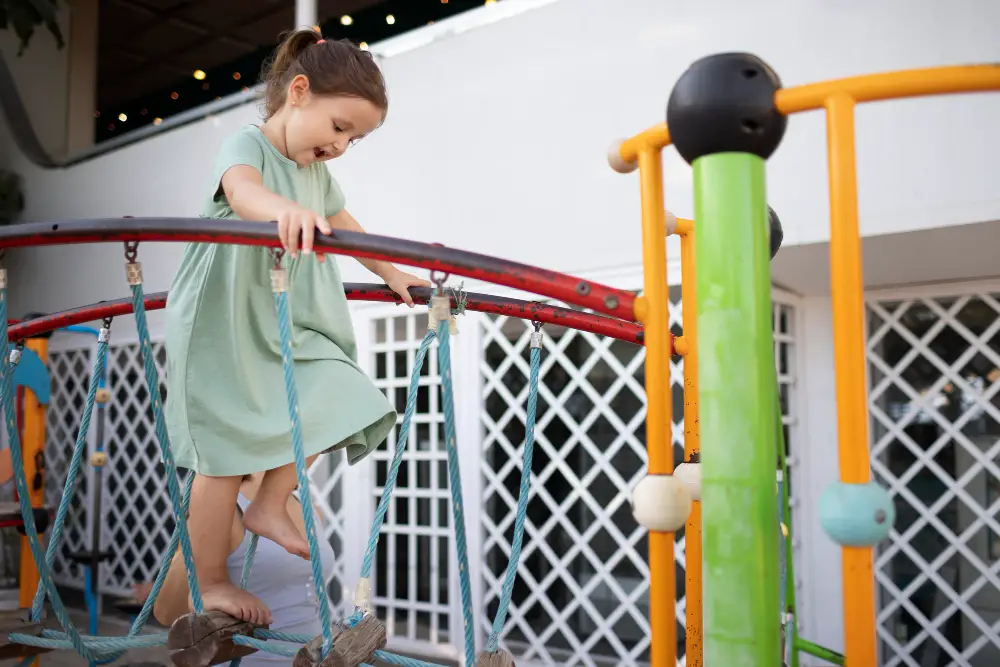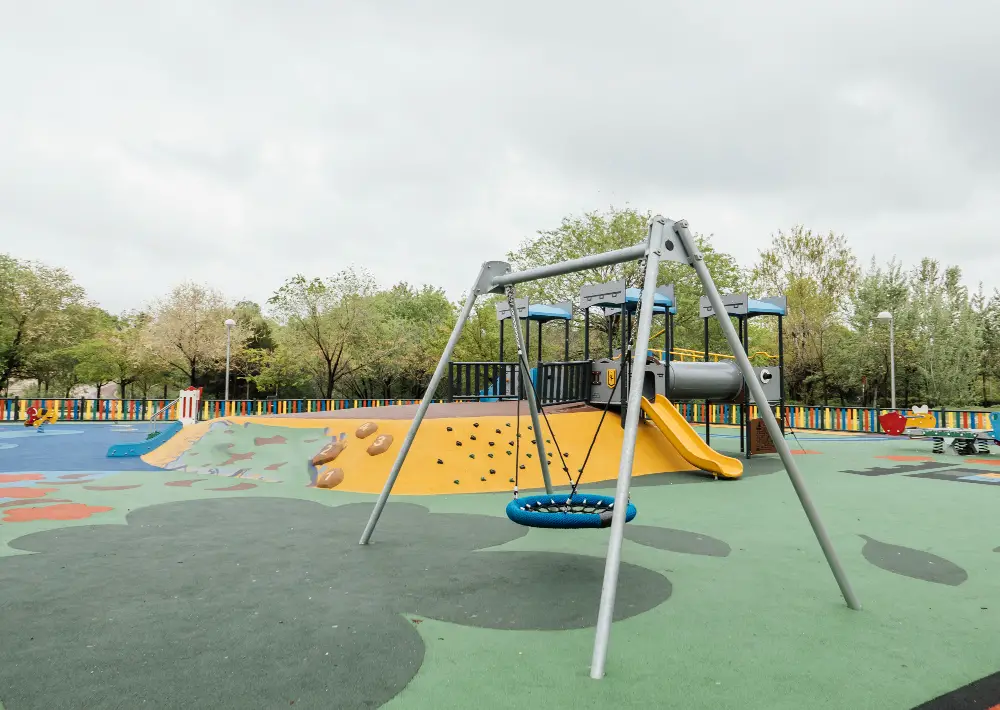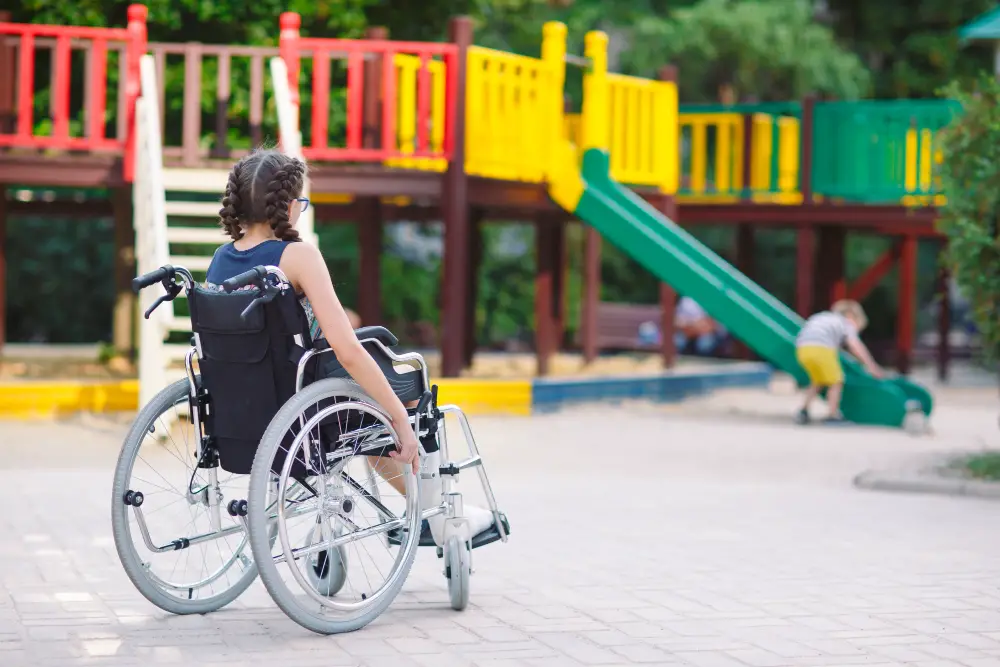Last updated on
Playgrounds are one of the most precious places for children, as it is where they explore a whole new world of imagination and creativity. However, many playgrounds lack adequate safety elements designed with the correct materials and layouts for children to play safely while also looking aesthetically pleasing.
Thankfully, there are ways to improve your playground design that will make sure all safety needs have been met while ensuring that its appearance looks attractive. In this blog post, we’ll be discussing various tips you can use when laying out and designing a playground that both keeps kids safe and looks beautiful!
What's Inside
Safety Railing

One of the essential components of a safe and aesthetically pleasing playground is the safety railing. Railings can prevent children from accidentally wandering into potentially dangerous areas, or from falling from elevated platforms. They are particularly important for playgrounds that have multi-level play structures.
Starting or supporting commercial handrail projects ensures that these vital safety features are installed to the highest possible quality standards. This not only ensures the safety of children but also improves the overall appearance of the playground.
Soft and Impact-resistant Surfacing

Another crucial aspect of playground safety is the surface material. Impact-resistant surfacing materials like rubber mulch or engineered wood fiber can significantly mitigate the injuries caused by falls, which are a common occurrence in playgrounds. These materials provide cushioning that absorbs impact, reducing the risk of fractures or other serious harm.
In addition to safety, consider the aesthetic appeal of these surfaces. Available in various colors and textures, these surfacing materials can be used creatively to enhance the playground’s overall look. Remember, a playful and vibrant surface design can stimulate children’s minds and encourage imaginative play.
Equipment Placement and Spacing

The correct placement and spacing of playground equipment is a crucial aspect of playground safety and design. Ensuring there is enough space between various pieces of equipment can help prevent accidents caused by children running into each other or equipment. Providing clear, unobstructed pathways around and through the play area also helps children move around more freely and safely.
Equally important is creating distinct zones for different types of play – quieter games away from the more active and physical play sections, for instance. Strategically spacing equipment not only improves safety but can also enhance the overall aesthetic of the playground. By creating visually distinct areas, it’s possible to make the playground feel larger, more diverse, and engaging for children with various interests and abilities.
Ensuring Accessibility for All

A well-designed playground is not just safe and attractive, but also inclusive and accessible to all children, including those with disabilities. For true inclusivity, playground designs should incorporate elements that cater to children with various physical abilities and sensory preferences.
Ramps, for instance, can ensure wheelchair users can access elevated platforms. Equipment such as sensory boards or musical instruments can cater to children with sensory processing issues, enriching their play experience.
In the same vein, visual cues and signage can be beneficial for children with cognitive or developmental disabilities. By incorporating these design elements, you create a playground that is not only aesthetically pleasing but also a space where every child, regardless of their ability, can feel welcomed and included. Remember, an accessible playground encourages all children to interact, learn, and grow together.
Promoting Supervision and Visibility
An integral aspect of playground safety and aesthetics is promoting supervision and visibility. Designing a playground with clear sightlines allows caregivers, parents, and supervisors to monitor children’s activities easier, reducing the likelihood of accidents or injuries.
This can be achieved by strategically placing taller structures towards the center of the playground and lower ones around the edges, ensuring an unobstructed view of the entire playground area at all times.
Incorporating open spaces in the design can enhance visibility, while also providing room for children to run and play freely. Using bright colors for playground equipment can not only improve aesthetics but also make the structures more noticeable. Mirrors and reflective materials can enhance visibility in playgrounds with limited light conditions.
Remember, a playground that promotes visibility and supervision is safer and more inviting. It reassures parents and caregivers that the environment is secure, while its engaging appearance attracts children, making their playtime more enjoyable and enriching.
Shade and Shelter Options
Introducing shade and shelter options into a playground design contributes significantly to both aesthetic appeal and user safety. Playgrounds can be exposed to various weather conditions, be it the scorching sun or occasional rainfall, which could potentially disrupt outdoor play.
A strategically placed shade structure or shelter can offer a solution to these issues, providing a cool, shaded area during sunny days and a dry space during wet weather.
There are various types of shade structures to consider, such as pergolas, gazebos, and shade sails. These structures not only provide protection but also add an architectural element to the playground, enhancing its overall aesthetics.
They can be designed in different shapes, sizes, and colors to match the playground’s theme or color scheme. Similarly, shelters or canopies can be installed over specific areas, like seating or picnic areas, allowing parents or caregivers to supervise children comfortably regardless of the weather.
Incorporating Natural Elements
Incorporating natural elements into playground design not only enhances its aesthetic appeal but also contributes to children’s holistic development. Greenery, such as trees, shrubs, and flower beds, can create a calming environment, promoting relaxation and reducing stress. They also offer an additional layer of shade, further ensuring the comfort of users.
Moreover, natural elements such as sand, water, or rock formations provide children with diverse sensory experiences, encouraging exploration and discovery. This nature-infused play can help children develop various skills, including problem-solving, creativity, and social skills.
Using logs, stumps, or boulders as playground equipment can create a unique, rustic aesthetic, blending the playground seamlessly into its natural surroundings. These elements provide children with a sense of adventure, making each playtime an exciting exploration of the natural world.
Remember, a playground that harmoniously blends natural and constructed elements is not only visually appealing but also provides a rich, multi-sensory play experience that is beneficial for children’s overall growth and development.
The Takeaway
Playground design is a critical aspect to consider when creating a safe, engaging, and inclusive play space for children. By following these guidelines and incorporating various elements into the design, you can create a vibrant, attractive playground that promotes safety, accessibility, supervision, and interaction for all children. So let your imagination run wild and create a one-of-a-kind playground that will be loved by children and adults alike.




